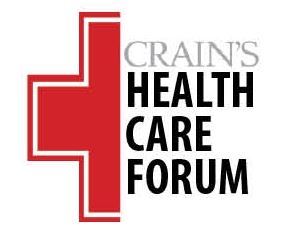Survey Shows Elder Care a Growing Concern for Adults Balancing Work and Family!
December 16, 2014 1 Comment
by Kevin K. Johnson, Certified Senior Advisor (CSA)®
Perhaps it is a sign of age! Not only did 2014 seem to fly by, but each year now seems to come and go faster than ever before! I’m happy to see another year coming and I continue to look upon December both with reflection of the year that was, and with optimism for the year to come.
If you’ve been reading my blog over the years you know that I like data and that I like to report out on what the data tells us. That said, according to a recent study of more than 5,000 U.S. workers, mid-career employees have become increasingly dependent on employer-sponsored back-up eldercare programs. This increase in demand for elder care mirrors the increase in the number of people providing care to an aging relative – more than 40 million people had responsibility for an elder’s care in 2012, according to the Bureau of Labor Statistics. The Lasting Impact of Employer-Sponsored Back-up Care, a study conducted by Horizons Workforce Consulting and Russell Matthews, PhD, assistant professor of psychology at Bowling Green State University, confirms that working men and women ages 40 to 60 are embracing elder care supports in order to focus and remain productive at work while feeling confident that their aging parent – or spouse – has access to quality care.
more than 5,000 U.S. workers, mid-career employees have become increasingly dependent on employer-sponsored back-up eldercare programs. This increase in demand for elder care mirrors the increase in the number of people providing care to an aging relative – more than 40 million people had responsibility for an elder’s care in 2012, according to the Bureau of Labor Statistics. The Lasting Impact of Employer-Sponsored Back-up Care, a study conducted by Horizons Workforce Consulting and Russell Matthews, PhD, assistant professor of psychology at Bowling Green State University, confirms that working men and women ages 40 to 60 are embracing elder care supports in order to focus and remain productive at work while feeling confident that their aging parent – or spouse – has access to quality care.
Sandwich Generation employees, those who care for their aging parents while also supporting their own young children, are particularly impacted. Roughly one out of every eight Americans between the ages of 40 and 60 fall into this group, according to the Pew Research Institute, and between 7 million and 10
million Americans are providing care for their aging parents from afar with little or no back-up support in the case of an emergency.
“The tensions of child care, eldercare, and work make the Sandwich Generation most prone to acute caregiver stress. Not only are they overwhelmed trying to balance their careers with the demands of parenthood but also with the responsibility of caring for their own aging parents. “Having access to quality back-up care for children and adult relatives can go a long way toward alleviating stress for these employees and reducing absenteeism and loss of productivity for their employers” according to David Lissy, Bright Horizons Chief Executive Officer.
In fact, a recent study surveyed employees who used this type of program within a 6 month period. Of the respondents with adult/eldercare responsibilities:
- Two-thirds are providing daily living support for an adult relative.
- Three-quarter are providing health-related supports for their aging family members.
- Nearly 100% said that having an eldercare benefit like the Back-Up Care Advantage Program has provided them with a level of comfort and increased their productivity.
- Nearly 70% of those surveyed who used the eldercare benefit said that this benefit has allowed them to work on a day they would have otherwise missed, and, on average, having access to adult back-up care has allowed employees to work six days in the past six months that they otherwise would have missed.
If you are like so many companies in the U.S. that have not provided for some form of eldercare assistance for your employees, then make 2015 a year of action. Your company and your employees will greatly benefit from this action. Remember, employers in the U.S., including your company, have an aggregate loss in worker productivity in excess of $33 billion every year directly attributed to employees having to address elder care issues.
Please reference my blog post from December of 2011 titled Home for the Holiday’s … Gather Critical Information on Your Aging Parents, and my blog post of December 2012, Home for the Holiday’s — Time for an Assessment! I believe that each contain timeless information that you should reference with respect to your aging loved ones. Each of these blogs are less focused on employer/employee issues of lost productivity resulting from the urgency of adult caregiving. Instead, they ask that each of us pay special attention to their older loved ones during this time of the year when family visits are so prevalent.













